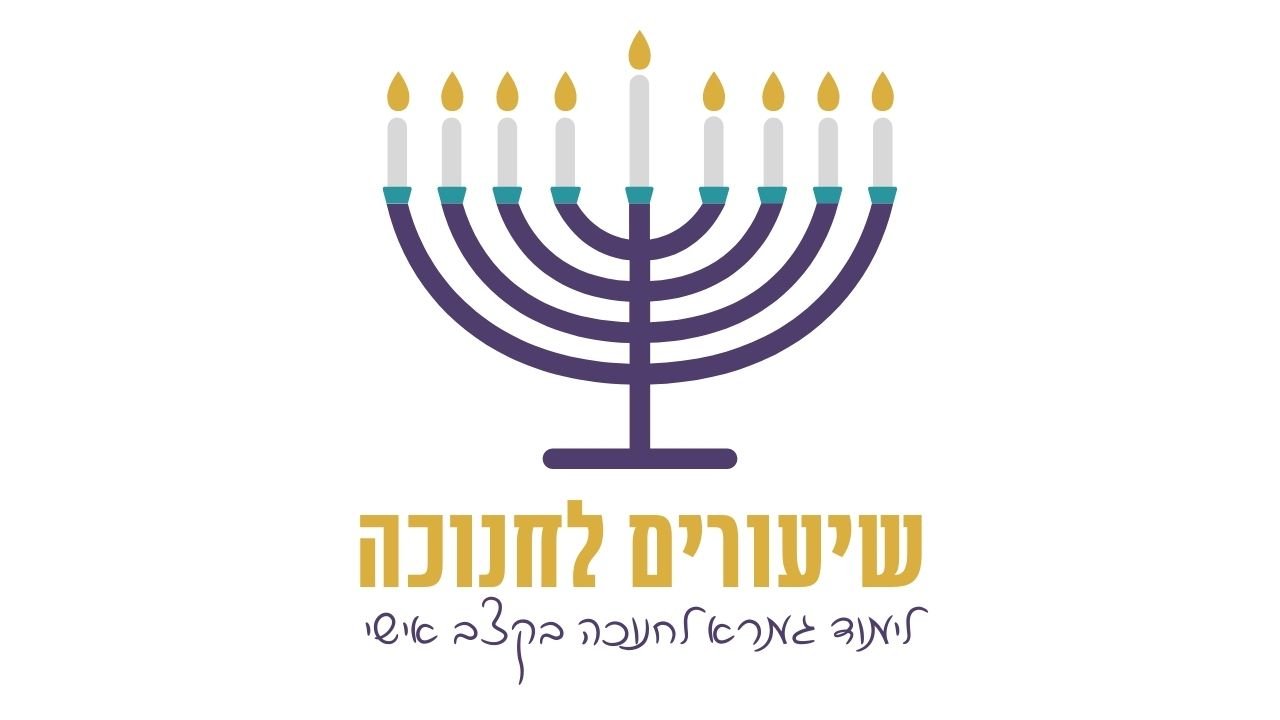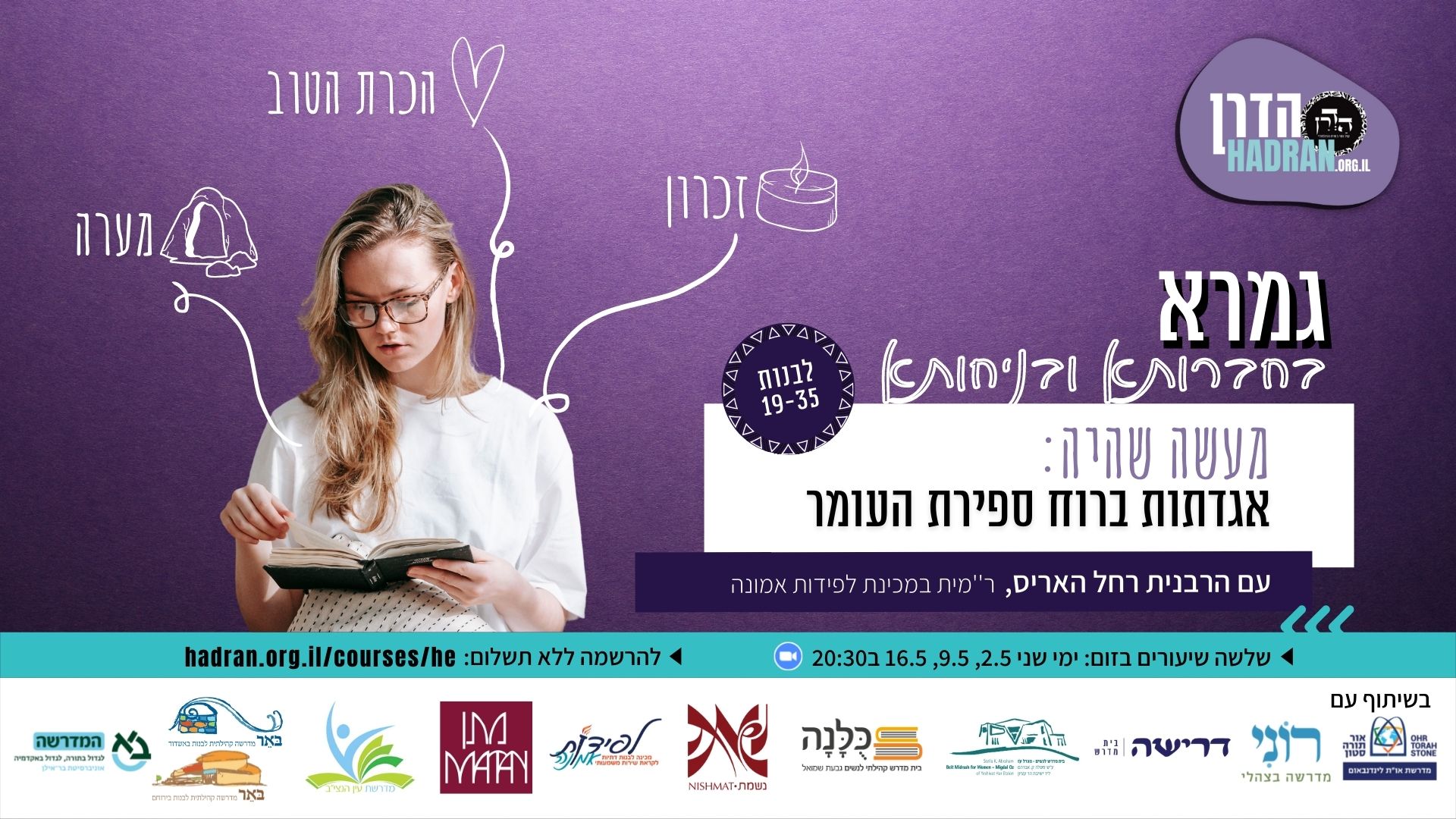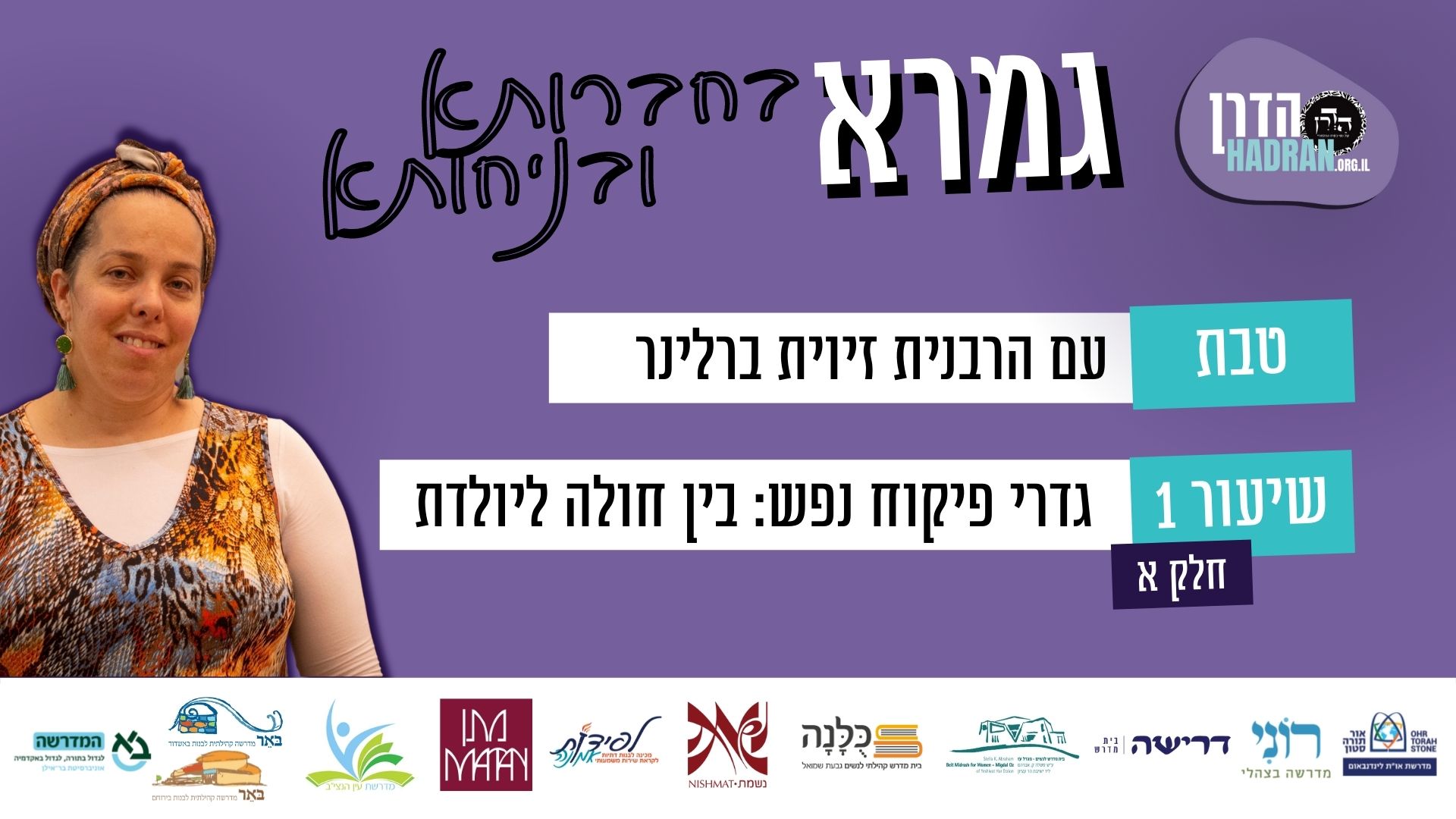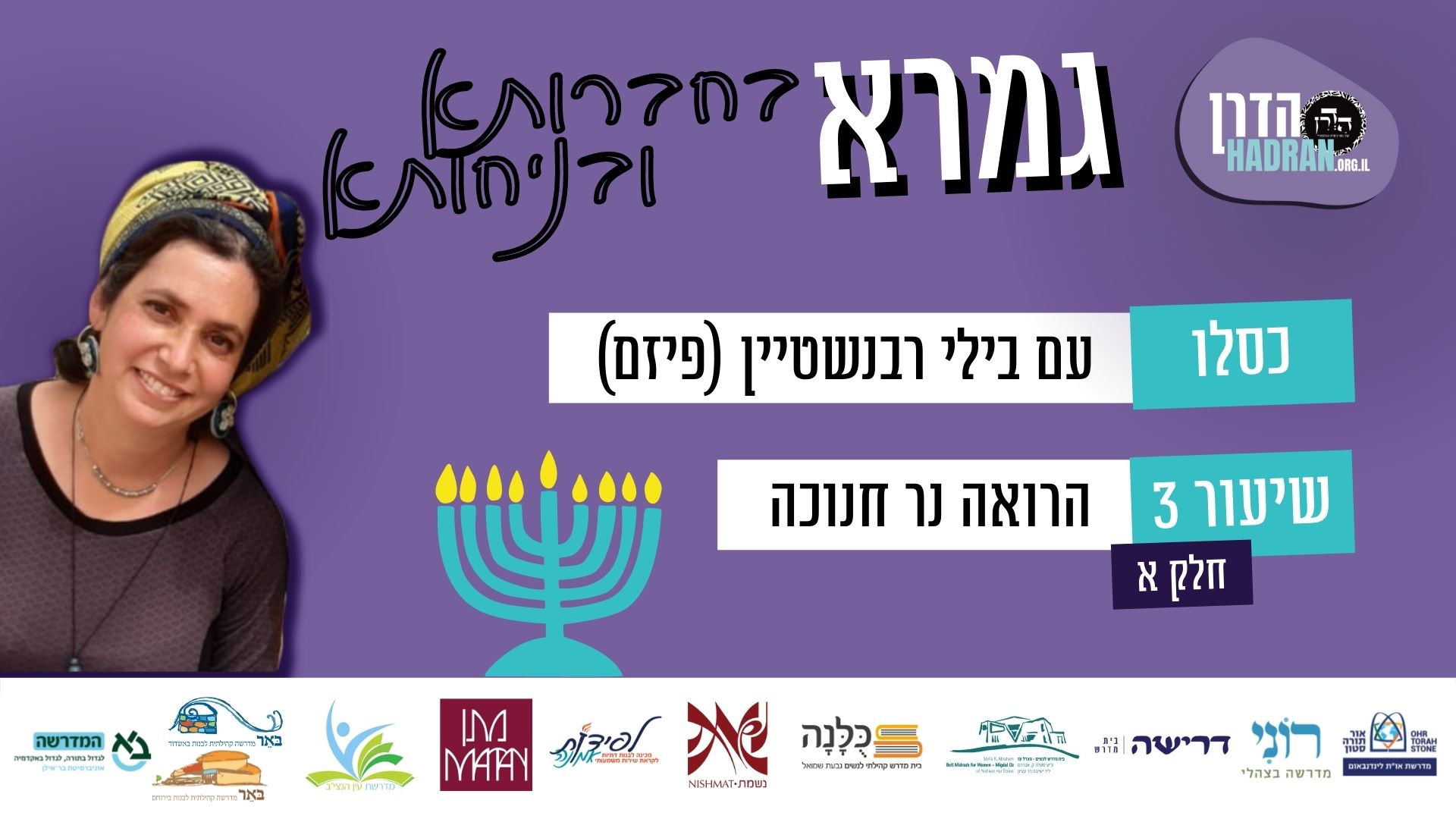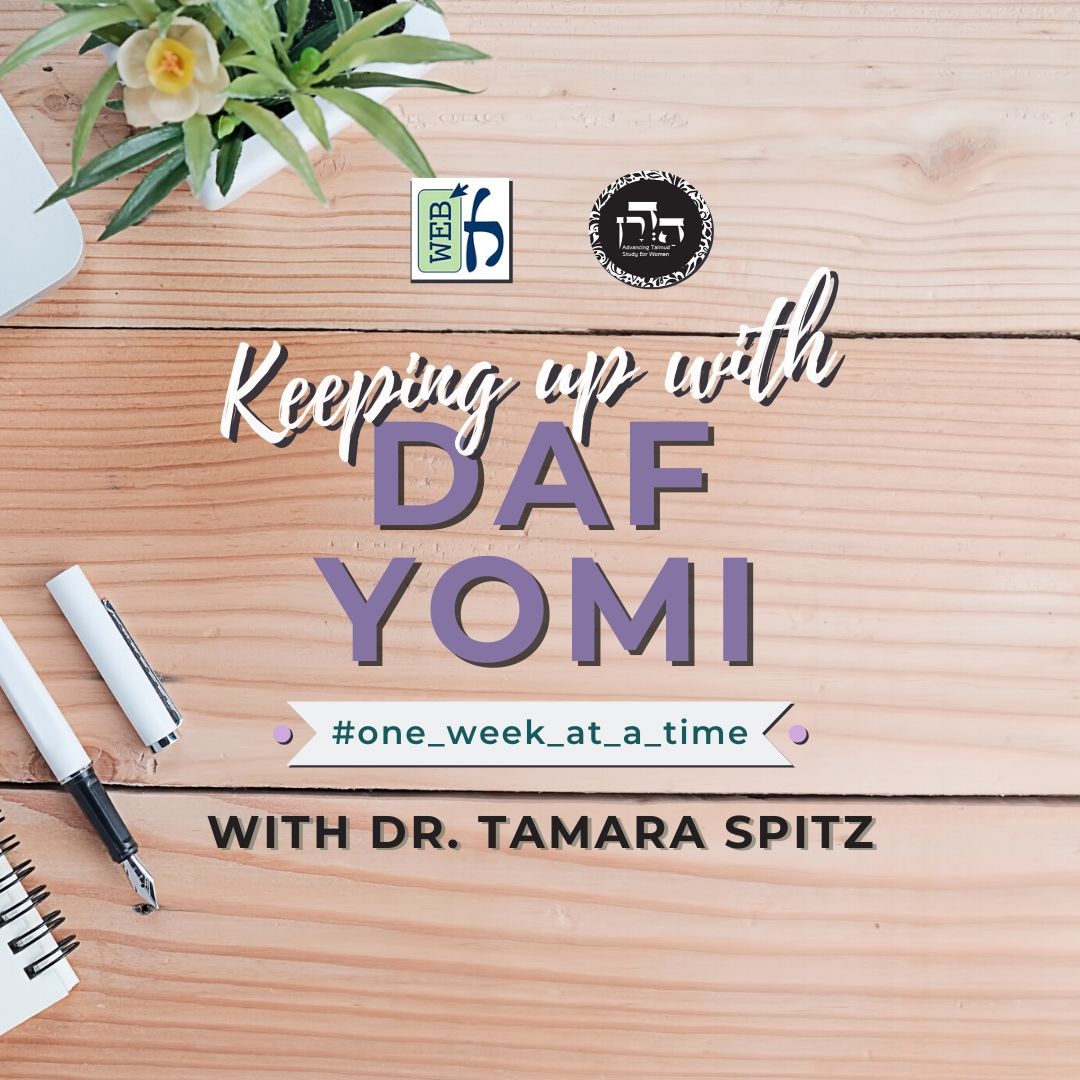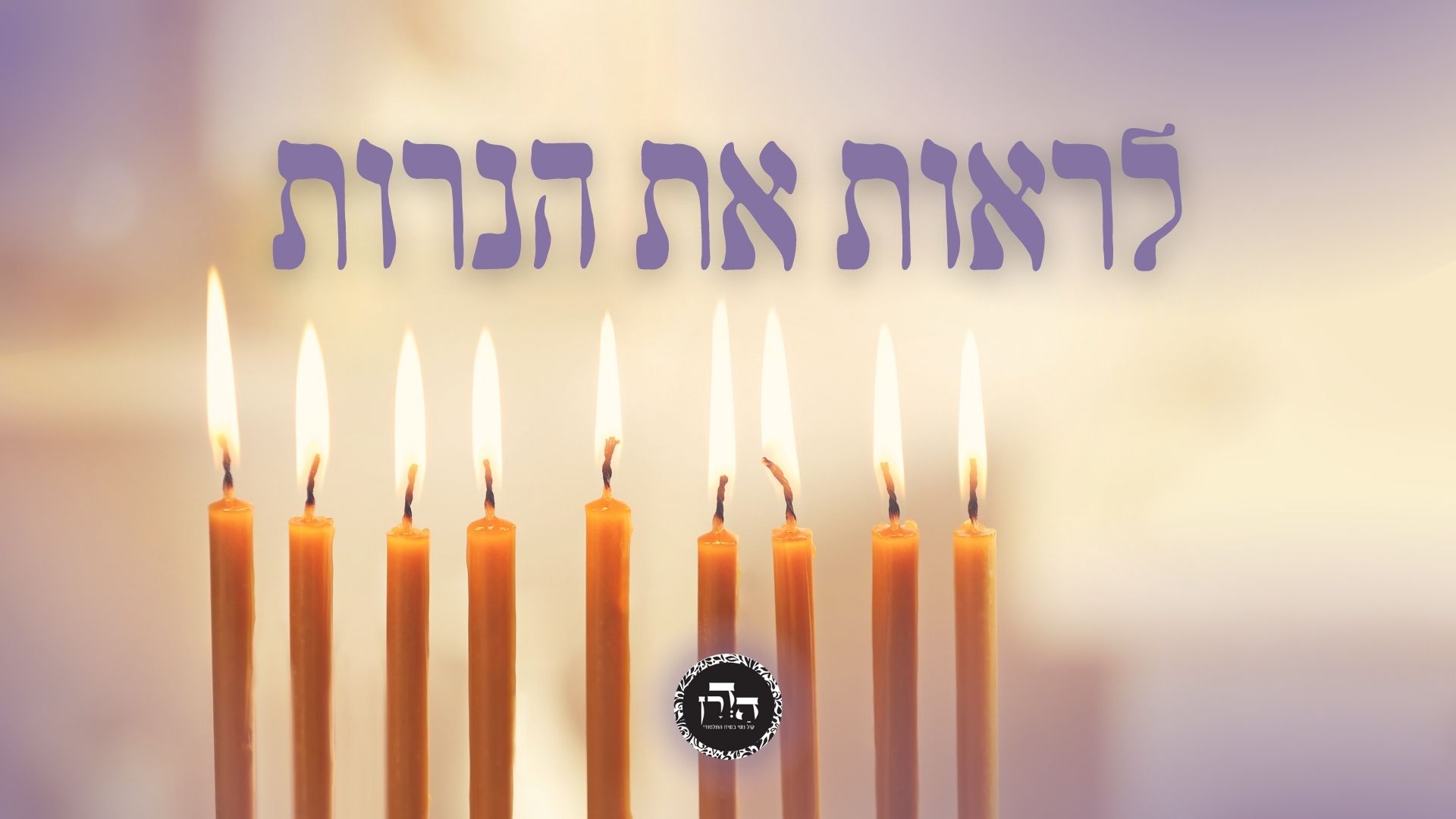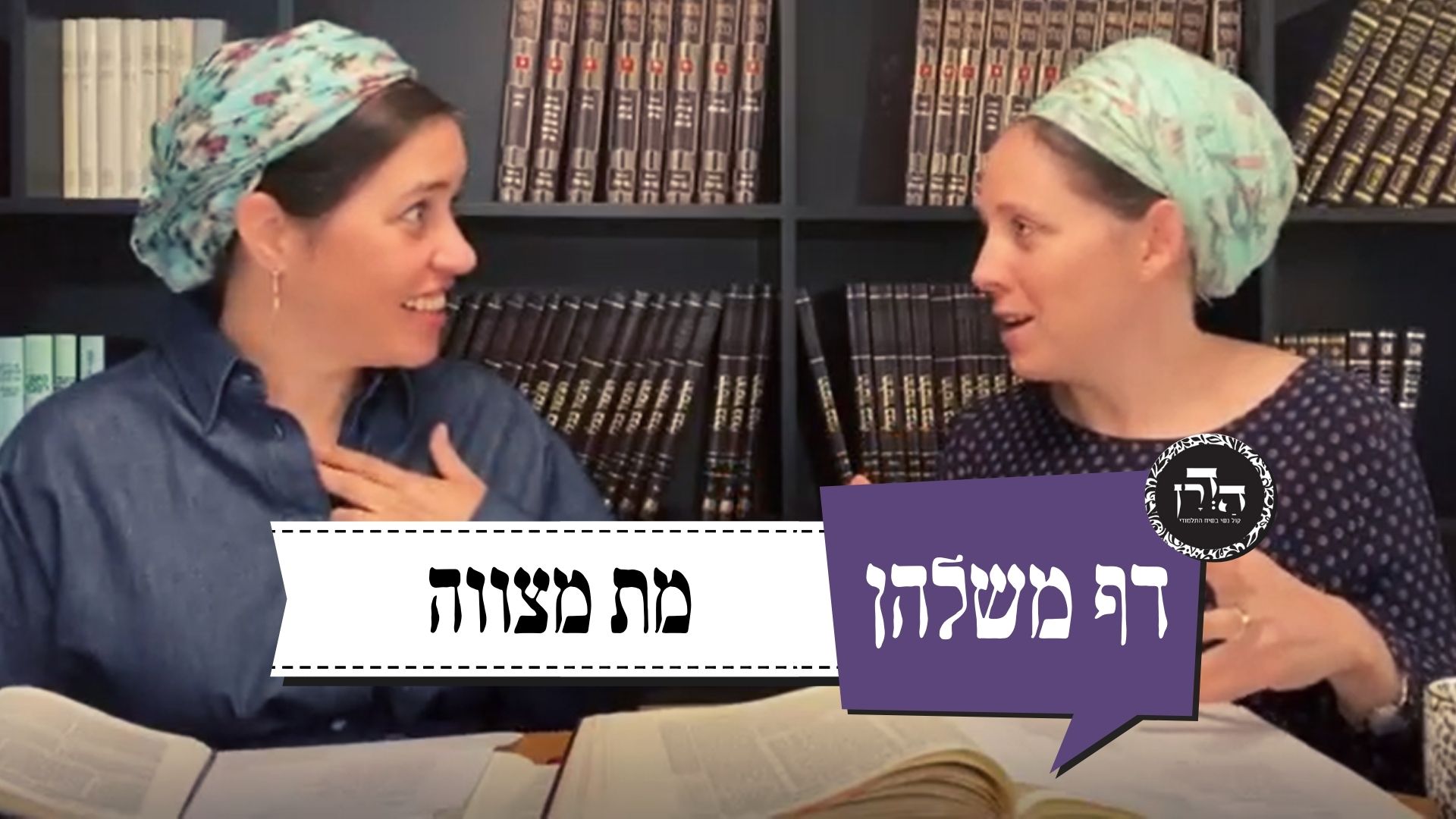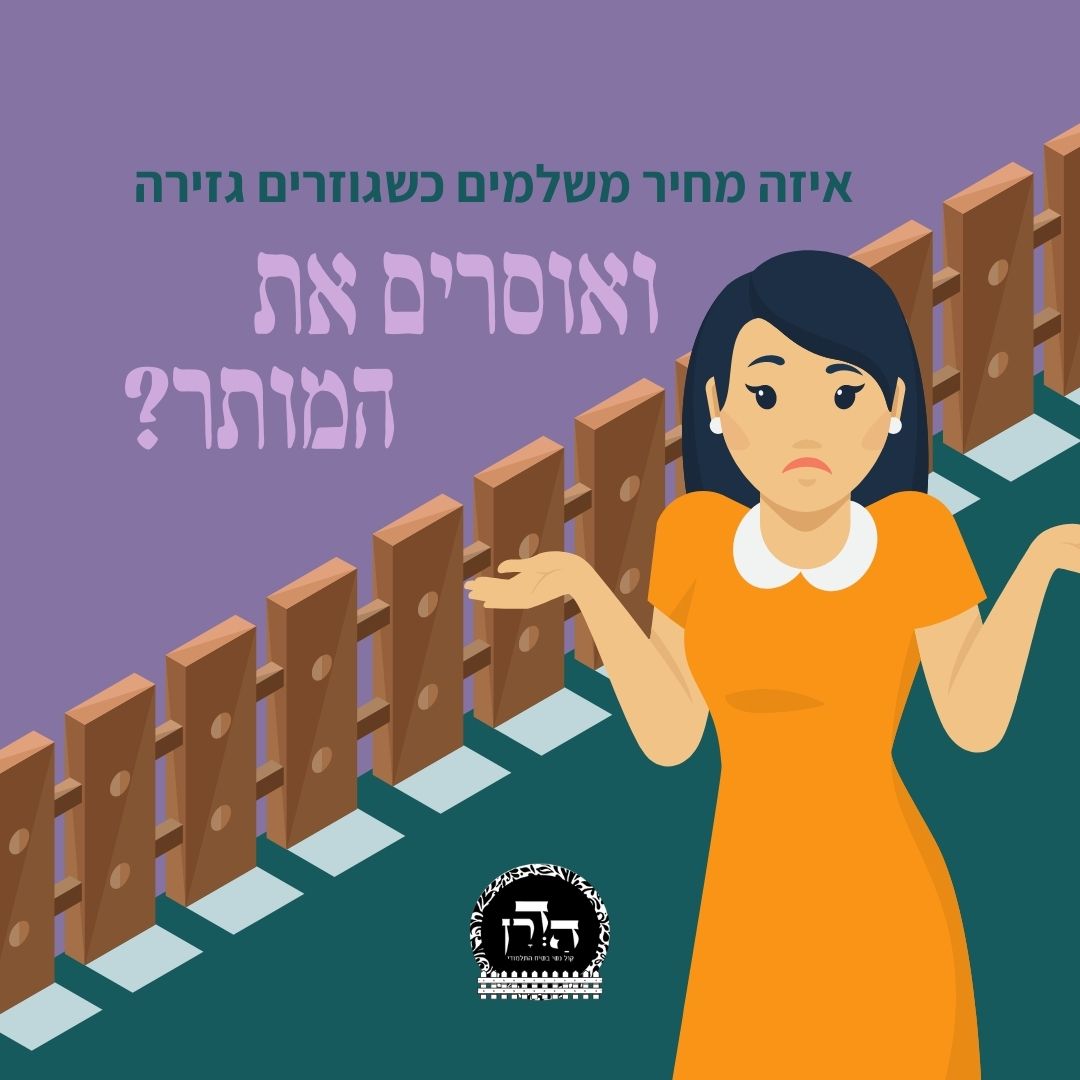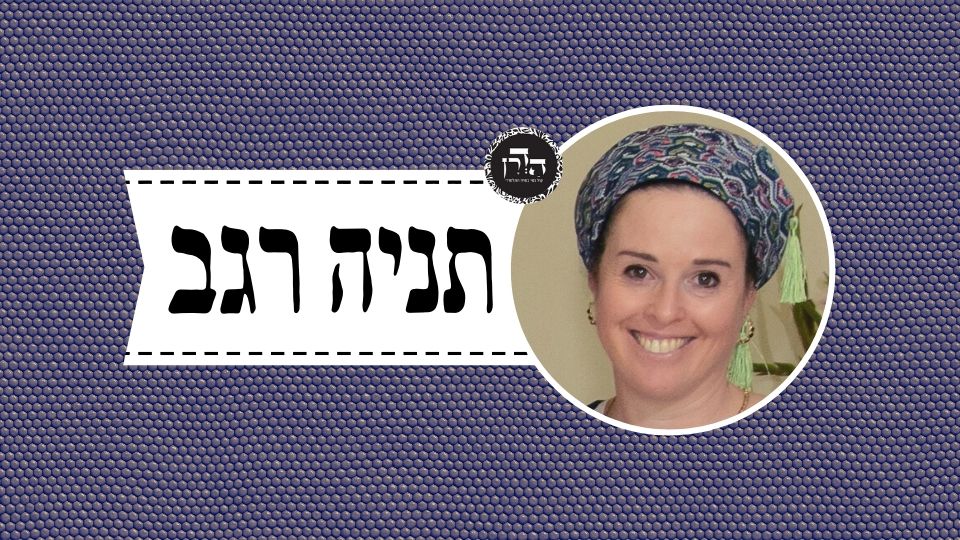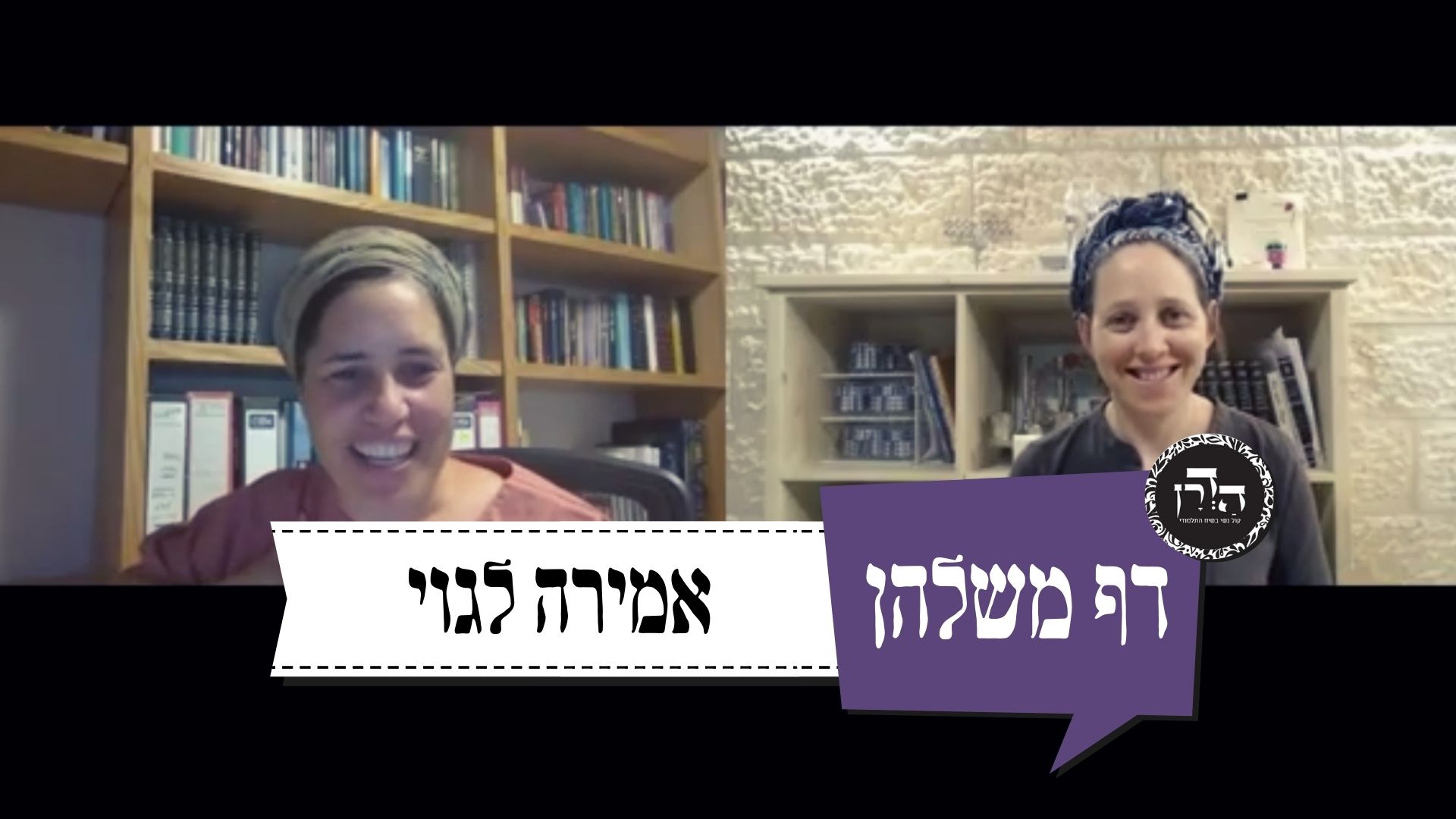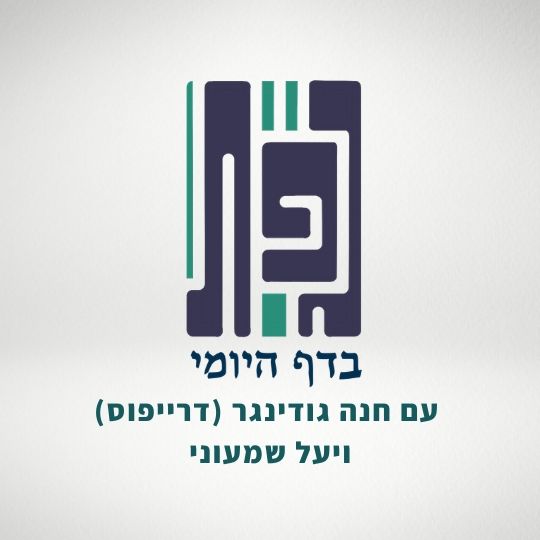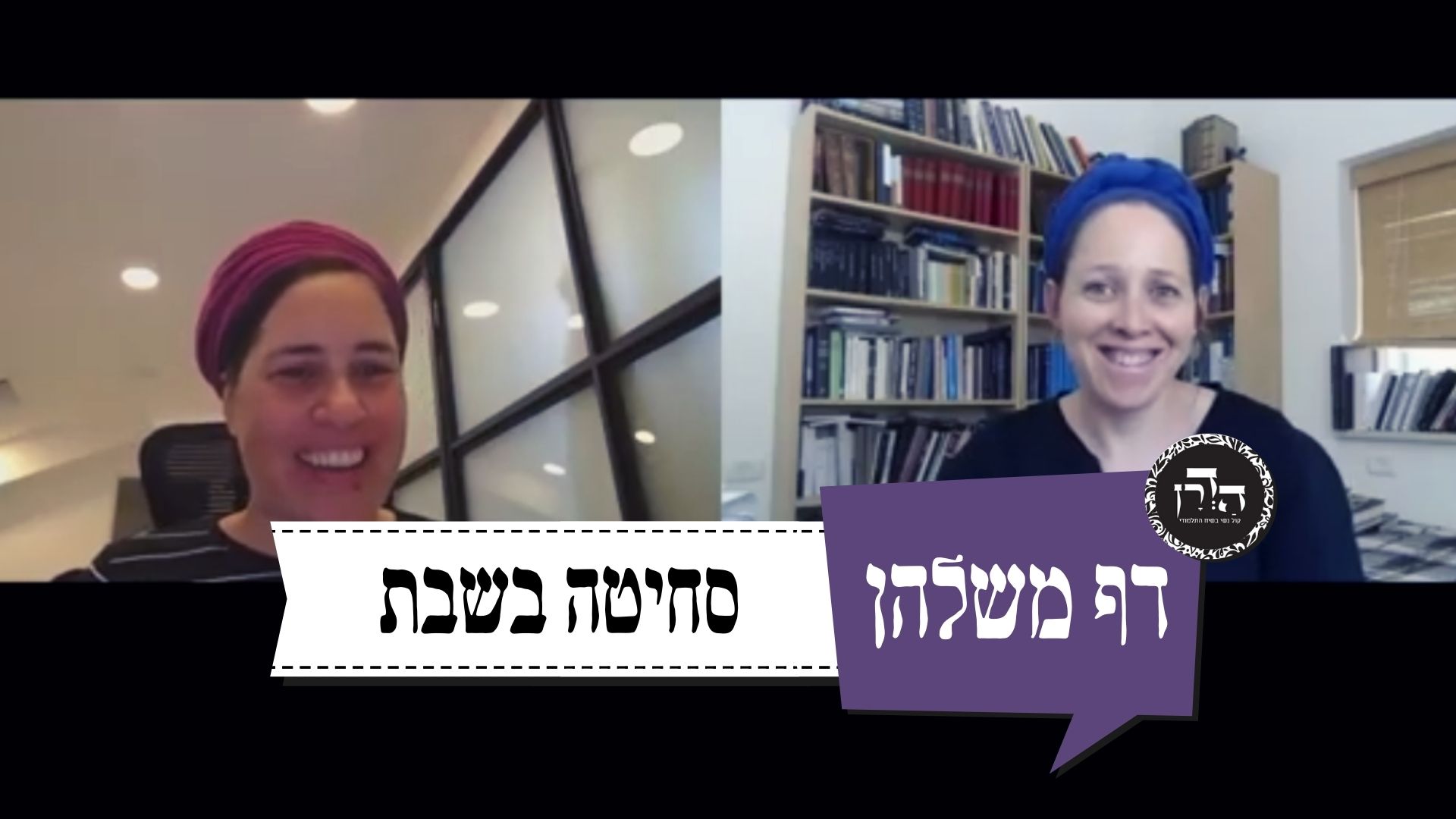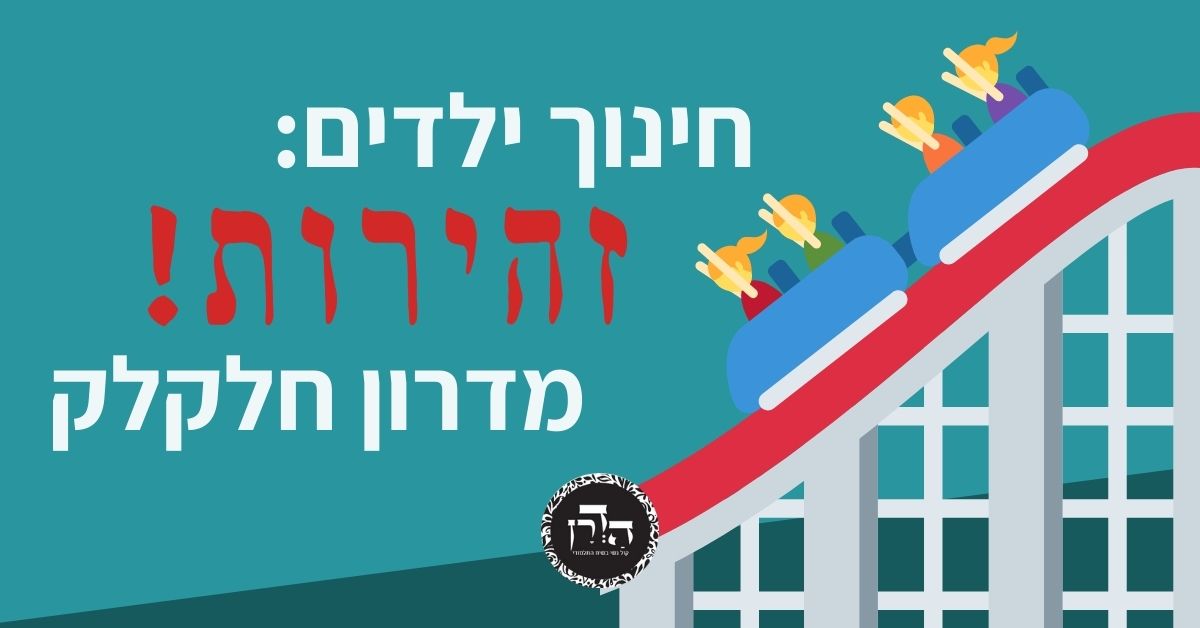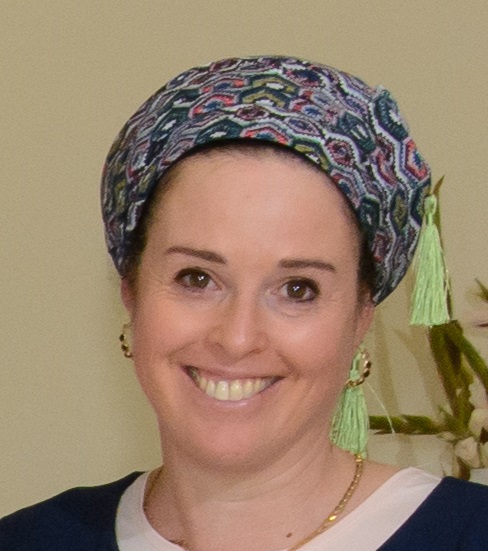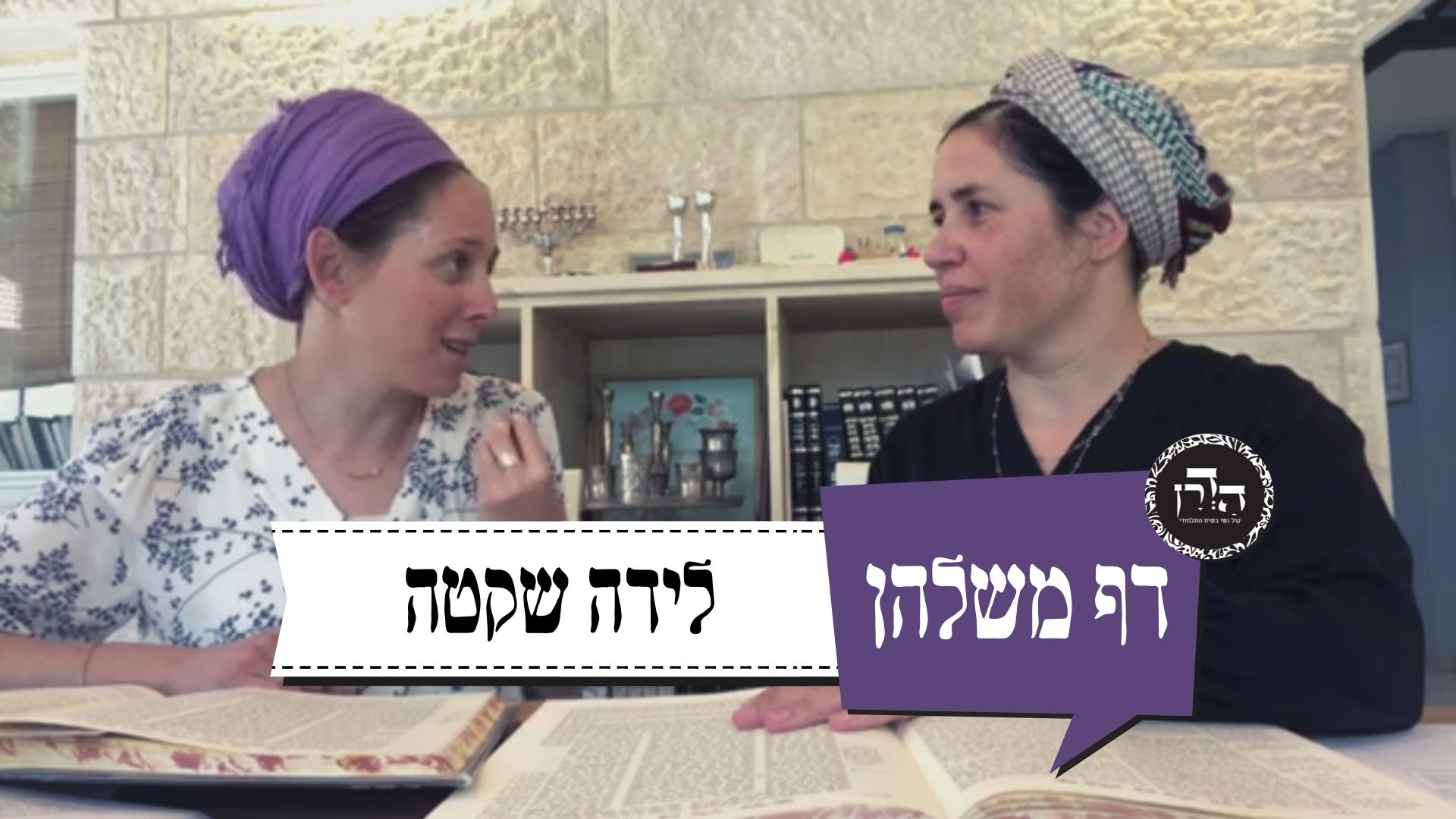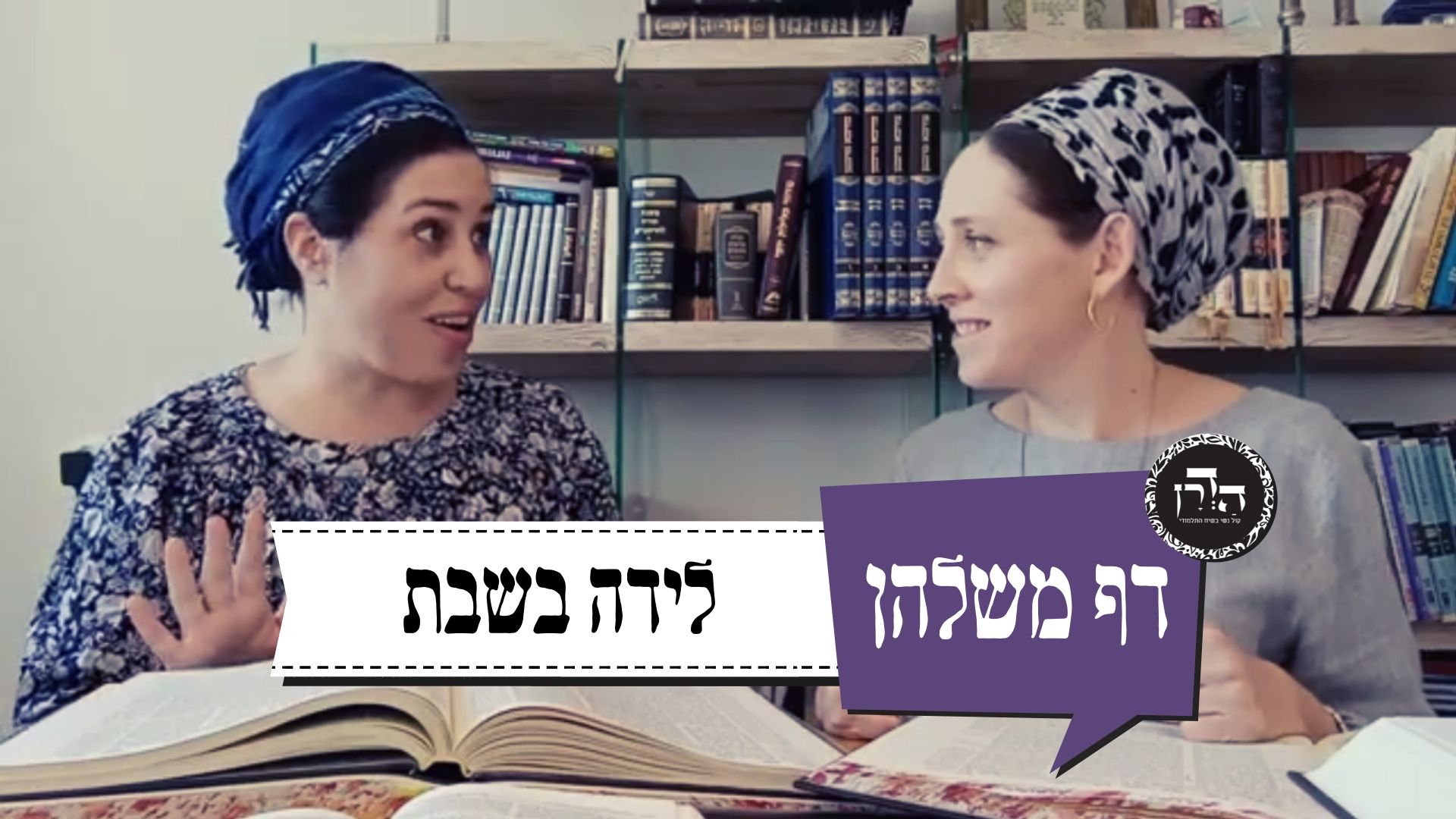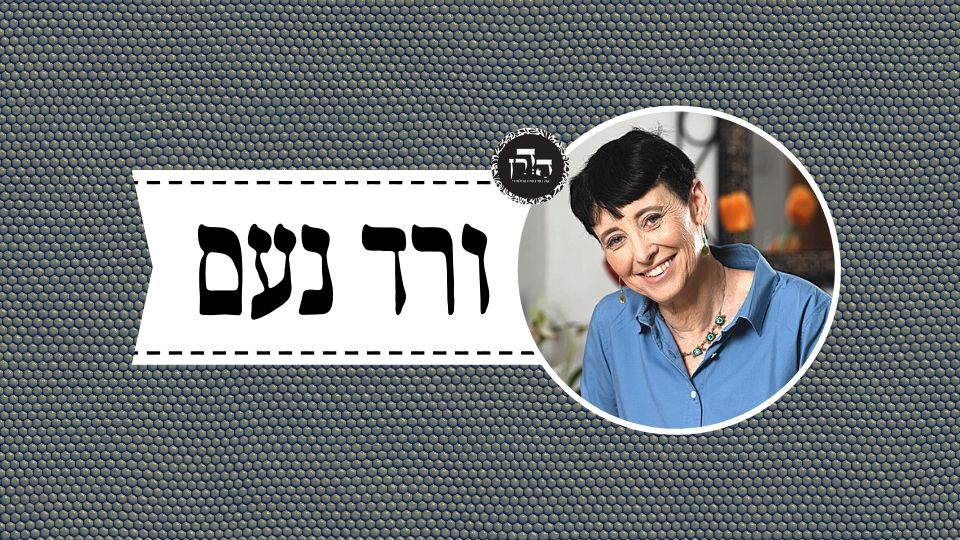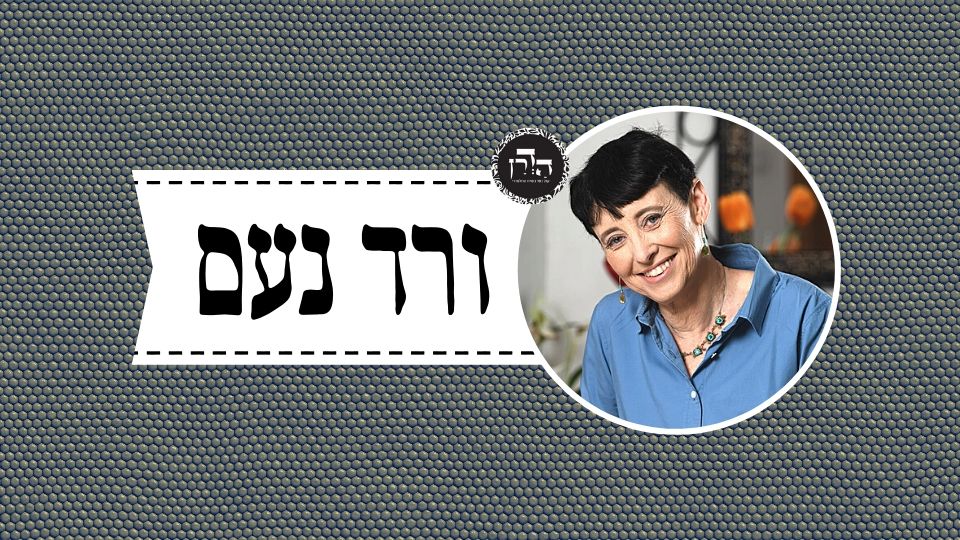שבת נז
מַתְנִי׳ בַּמָּה אִשָּׁה יוֹצְאָה, וּבַמָּה אֵינָהּ יוֹצְאָה?
The mishna lists items that a woman may or may not carry into, or wear in the public domain on Shabbat. This depends on whether the particular object is considered an ornament, which she may wear, or merely a burden for the woman, which she may not. Even if it is considered an ornament, there is still concern that she might remove it and carry it in her hand in the public domain, which is prohibited by Torah law.
MISHNA: With what items may a woman go out into the public domain on Shabbat and with what items may she not go out?
לֹא תֵּצֵא אִשָּׁה לֹא בְּחוּטֵי צֶמֶר וְלֹא בְּחוּטֵי פִּשְׁתָּן וְלֹא בִּרְצוּעוֹת שֶׁבְּרֹאשָׁהּ. וְלֹא תִּטְבּוֹל בָּהֶן, עַד שֶׁתְּרַפֵּם.
A woman may neither go out with strings of wool, nor with strings of flax, nor with strips of any other materials that a woman braids in the hair of her head. And a woman may not immerse in a ritual bath with them in her hair until she loosens them. When the strings or strips are tight, the water cannot reach her hair unobstructed, invalidating her immersion.
וְלֹא בְּ״טוֹטֶפֶת״ וְלֹא בְּסַרְבִּיטִין בִּזְמַן שֶׁאֵינָן תְּפוּרִים. וְלֹא בְּכָבוּל לִרְשׁוּת הָרַבִּים.
And, likewise, a woman may neither go out with the ornament called totefet, nor with sarvitin that are not sewn into her head covering, nor with a kavul into the public domain.
וְלֹא בְּעִיר שֶׁל זָהָב וְלֹא בְּקַטְלָא וְלֹא בִּנְזָמִים וְלֹא בְּטַבַּעַת שֶׁאֵין עָלֶיהָ חוֹתָם וְלֹא בְּמַחַט שֶׁאֵינָהּ נְקוּבָה.
And, likewise, a woman may neither go out with a city of gold ornament, nor with a katla ornament, nor with nose rings, nor with a ring that has no seal on it, nor with a needle that is not perforated, which are merely for decorative purposes.
וְאִם יָצָאת אֵינָהּ חַיֶּיבֶת חַטָּאת.
And if she unwittingly went out wearing any of these, she is not liable to bring a sin-offering. According to Torah law, a woman is permitted to go out into the public domain wearing ornaments. However, the Sages decreed that a woman may not go out wearing certain ornaments, lest she remove them to show them to another and inadvertently carry them four cubits in the public domain.
גְּמָ׳ טְבִילָה מַאן דְּכַר שְׁמַהּ?
GEMARA: The Gemara asks: Immersion, who mentioned anything about that? The mishna is dealing with the halakhot of Shabbat, so why did it mention the halakhot of immersion?
אָמַר רַב נַחְמָן בַּר יִצְחָק אָמַר רַבָּה בַּר אֲבוּהּ — מַה טַּעַם קָאָמַר: מַה טַּעַם לֹא תֵּצֵא אִשָּׁה לֹא בְּחוּטֵי צֶמֶר וְלֹא בְּחוּטֵי פִּשְׁתָּן — מִפְּנֵי שֶׁאָמְרוּ חֲכָמִים בַּחוֹל לָא תִּטְבּוֹל בָּהֶן עַד שֶׁתְּרַפֵּם. וְכֵיוָן דִּבְחוֹל לָא תִּטְבּוֹל בָּהֶן עַד שֶׁתְּרַפֵּם, בְּשַׁבָּת לֹא תֵּצֵא, דִּילְמָא מִיתְרְמֵי לַהּ טְבִילָה שֶׁל מִצְוָה וְשָׁרְיָא לְהוּ, וְאָתֵי לְאֵתוֹיִינְהוּ אַרְבַּע אַמּוֹת בִּרְשׁוּת הָרַבִּים.
Rav Naḥman bar Yitzḥak said that Rabba bar Avuh said: When the mishna states the halakha, it employs the style known as: What is the reason. The mention of immersion is an explanation, not a superfluous addition. The mishna should be understood as follows: What is the reason that a woman may neither go out with strings of wool nor with strings of flax? It is because the Sages said that on weekdays she may not immerse with them until she loosens them. And since on weekdays she may not immerse with them until she loosens them, on Shabbat she may not go out with them, lest a situation requiring immersion for the purpose of a mitzva come about, and she untie them, and come to carry them four cubits in the public domain.
בְּעָא מִינֵּיהּ רַב כָּהֲנָא מֵרַב: תִּיכֵי חֲלִילָתָא מַאי? אֲמַר לֵיהּ: אָרִיג קָאָמְרַתְּ? כׇּל שֶׁהוּא אָרִיג לֹא גָּזְרוּ. אִיתְּמַר נָמֵי, אָמַר רַב הוּנָא בְּרֵיהּ דְּרַב יְהוֹשֻׁעַ: כׇּל שֶׁהוּא אָרִיג לֹא גָּזְרוּ.
Rav Kahana raised a dilemma before Rav: With regard to strings made into hollow chains, what is the halakha? Is it permissible for women to go out into the public domain with them on Shabbat or not? It depends on whether they are considered an interposition to immersion. Rav said to him: Woven, you say? With regard to anything woven, the Sages did not issue a decree. Because water reaches the hair unobstructed, there is no need to loosen the hollow chain and there is no concern lest she carry it in the public domain. It was also stated that Rav Huna, son of Rav Yehoshua, said: With regard to anything woven, the Sages did not issue a decree.
וְאִיכָּא דְּאָמְרִי, אָמַר רַב הוּנָא בְּרֵיהּ דְּרַב יְהוֹשֻׁעַ: חֲזֵינָא לְאַחְווֹתִי דְּלָא קָפְדָן עֲלַיְיהוּ.
And some say that Rav Huna, son of Rav Yehoshua, said: I saw that my sisters are not particular about removing them, and they bathe even with woven chains tied in their hair. Apparently, water reaches the hair. Therefore, the chain is not an interposition with regard to immersion.
מַאי אִיכָּא בֵּין הַךְ לִישָּׁנָא וּבֵין הַךְ לִישָּׁנָא?
The Gemara asks: What practical difference is there between this version and that version of the resolution of the dilemma?
אִיכָּא בֵּינַיְיהוּ דִּטְנִיפָן. לְהַךְ לִישָּׁנָא דְּאָמַר כׇּל שֶׁהוּא אָרִיג לֹא גָּזְרוּ — הָנֵי נָמֵי אָרִיג נִינְהוּ, וּלְהַךְ לִישָּׁנָא דְּאָמְרַתְּ מִשּׁוּם קְפִידָא — כֵּיוָן דִּטְנִיפָא מִקְפָּד קָפְדָא עֲלַיְיהוּ.
The Gemara explains: There is a practical difference between them in a case where the chains are dirty. According to this version, in which you said: With regard to anything woven, the Sages did not issue a decree, these too are woven. And according to that version, in which you said that it is due to the fact that his sisters were not particular; in this case, since they are dirty, she is particular about them and will certainly remove them when she washes. Therefore, she is required to do so when immersing in a ritual bath as well.
תְּנַן הָתָם: וְאֵלּוּ חוֹצְצִין בָּאָדָם: חוּטֵי צֶמֶר וְחוּטֵי פִּשְׁתָּן וְהָרְצוּעוֹת שֶׁבְּרָאשֵׁי הַבָּנוֹת. רַבִּי יְהוּדָה אוֹמֵר: שֶׁל צֶמֶר וְשֶׁל שֵׂעָר אֵין חוֹצְצִין מִפְּנֵי שֶׁהַמַּיִם בָּאִין בָּהֶן. אָמַר רַב הוּנָא: וְכוּלָּן, בְּרָאשֵׁי הַבָּנוֹת שָׁנִינוּ.
We learned in a mishna in tractate Mikvaot: And these are the objects that interpose for a person: Strings of wool, and strings of flax, and the straps that are on the girls’ heads. Rabbi Yehuda says: Strings of wool and strands of hair do not interpose because the water reaches the hair through them. Rav Huna said: And we learned all these, strings of wool and flax, in a case where they are used to tie the hair on the girls’ heads.
מַתְקִיף לַהּ רַב יוֹסֵף: לְמַעוֹטֵי מַאי? אִילֵּימָא לְמַעוֹטֵי דְּצַוָּאר, וּדְמַאי: אִילֵּימָא לְמַעוֹטֵי דְּצֶמֶר — הַשְׁתָּא רַךְ עַל גַּבֵּי קָשֶׁה חוֹצֵץ, רַךְ עַל גַּבֵּי רַךְ מִיבַּעְיָא?
Rav Yosef strongly objects to this halakha of Rav Huna: To exclude what other places in the body did Rav Huna say this? If you say that it comes to exclude strings tied to the neck, and then, strings made of what material does it exclude? If you say that it comes to exclude strings of wool, now, the mishna stated that soft strings of wool on top of hair, which is relatively hard, interpose and invalidates the immersion. With regard to soft strings on top of the soft flesh of the neck, is it necessary to say that they interpose?
וְאֶלָּא לְמַעוֹטֵי דְּחוּטֵי פִשְׁתָּן. הַשְׁתָּא קָשֶׁה עַל גַּבֵּי קָשֶׁה חוֹצֵץ, קָשֶׁה עַל גַּבֵּי רַךְ מִיבַּעְיָא?
Rather, say that Rav Huna’s statement came to exclude strings of flax. A similar difficulty arises: Now the mishna stated that hard strings of wool on top of hair, which is hard, interposes and invalidates the immersion. If so, with regard to hard strings on top of the soft flesh of the neck, is it necessary to say that they interpose?
אֶלָּא אָמַר רַב יוֹסֵף, הַיְינוּ טַעְמָא דְּרַב הוּנָא: לְפִי שֶׁאֵין אִשָּׁה חוֹנֶקֶת אֶת עַצְמָהּ.
Rather, Rav Yosef said, this is the reason that Rav Huna restricts the concern for interposition to strings tied in her hair and not around her neck: Because a woman does not strangle herself when adorning herself with a string or straps around her neck. Therefore, she never tightens the strings or straps to the extent that water cannot reach the skin.
אֵיתִיבֵיהּ אַבָּיֵי: הַבָּנוֹת יוֹצְאוֹת בְּחוּטִין שֶׁבְּאׇזְנֵיהֶן, אֲבָל לֹא בַּחֲבָקִין שֶׁבְּצַוְּארֵיהֶן. וְאִי אָמְרַתְּ אֵין אִשָּׁה חוֹנֶקֶת עַצְמָהּ, חֲבָקִין שֶׁבְּצַוְּארֵיהֶן אַמַּאי לָא?
Abaye raised an objection to the explanation of Rav Yosef from a baraita: The girls may go out into the public domain on Shabbat with strings in their ears. Young girls would have their ears pierced, but earrings were not placed in their ears until they were older. Instead, they inserted strings so that the holes would not close. However, they may not go out with straps around their necks. And if you say that the principle: A woman does not strangle herself, is halakhically valid, why may they not go out into the public domain with straps around their necks? They are not tied tight and do not constitute an interposition that invalidates immersion.
אָמַר רָבִינָא:
Ravina said:
הָכָא בְּקַטְלָא עָסְקִינַן, דְּאִשָּׁה חוֹנֶקֶת אֶת עַצְמָהּ — דְּנִיחָא לַהּ שֶׁתֵּרָאֶה כְּבַעֲלַת בָּשָׂר.
Here we are dealing with a broad, ornamented strap [katla] hanging around the neck, to which a small bib is attached. A woman does strangle herself with a katla because the strap is broad and tightening it does not cause pain. She tightens it because it pleases her that she will appear fleshy. It was considered beautiful to have flesh protrude from the katla.
רַבִּי יְהוּדָה אוֹמֵר שֶׁל צֶמֶר וְשֶׁל שֵׂעָר אֵין חוֹצְצִין, מִפְּנֵי שֶׁהַמַּיִם בָּאִין בָּהֶן.
In the same mishna in tractate Mikvaot, Rabbi Yehuda says: Strings of wool and strands of hair do not interpose and invalidate the immersion because the water reaches through them.
אָמַר רַב יוֹסֵף אָמַר רַב יְהוּדָה אָמַר שְׁמוּאֵל: הֲלָכָה כְּרַבִּי יְהוּדָה בְּחוּטֵי שֵׂעָר.
Rav Yosef said that Rav Yehuda said that Shmuel said: The halakha is in accordance with the opinion of Rabbi Yehuda with regard to strands of hair. However, the halakha is not in accordance with his opinion with regard to wool strings.
אֲמַר לֵיהּ אַבָּיֵי: הֲלָכָה, מִכְּלָל דִּפְלִיגִי!
Abaye said to him: By saying that the halakha is in accordance with Rav Yehuda, by inference the Rabbis disagree with regard to strands of hair. However, no opinion stating that strands of hair constitute an interposition is cited in the mishna.
וְכִי תֵּימָא, אִי לָאו דְּשָׁמְעֵיהּ לְתַנָּא קַמָּא דְּאַיְּירִי בְּחוּטֵי שֵׂעָר, אִיהוּ נָמֵי לָא הֲוָה מַיְירֵי — וְדִילְמָא ״כְּשֵׁם״ קָאָמַר לְהוּ: כִּי הֵיכִי דְּמוֹדִיתוּ לִי בְּחוּטֵי שֵׂעָר, אוֹדוֹ לִי נָמֵי בְּחוּטֵי צֶמֶר.
And if you say that had we not heard from the first tanna that he is speaking of strands of hair, Rabbi Yehuda would also not have spoken about them. Apparently, the first tanna prohibited strands of hair, and Rabbi Yehuda disagreed with him. Nevertheless, it could be explained otherwise. And, perhaps he prefaced what he was saying to the Rabbis with the phrase: Just as. Just as you agree with me that strands of hair do not interpose, agree with me that strings of wool also do not interpose. The fact that he mentioned strands of hair does not indicate a dispute; on the contrary, it is an attempt to establish a consensus with regard to the halakha.
אִיתְּמַר, אָמַר רַב נַחְמָן אָמַר שְׁמוּאֵל: מוֹדִים חֲכָמִים לְרַבִּי יְהוּדָה בְּחוּטֵי שֵׂעָר.
Indeed, it was stated that Rav Naḥman said that Shmuel said: The Rabbis agree with Rabbi Yehuda with regard to strands of hair.
תַּנְיָא נָמֵי הָכִי: חוּטֵי צֶמֶר חוֹצְצִין, חוּטֵי שֵׂעָר אֵין חוֹצְצִין. רַבִּי יְהוּדָה אוֹמֵר: שֶׁל צֶמֶר וְשֶׁל שֵׂעָר אֵין חוֹצְצִין.
This opinion was also taught in a baraita: Strings of wool interpose. Strands of hair do not interpose. Rabbi Yehuda says: Both strings of wool and strands of hair do not interpose.
אָמַר רַב נַחְמָן בַּר יִצְחָק: מַתְנִיתִין נָמֵי דַּיְקָא, דְּקָתָנֵי: יוֹצְאָה אִשָּׁה בְּחוּטֵי שֵׂעָר, בֵּין מִשֶּׁלָּה בֵּין מִשֶּׁל חֲבֶרְתָּהּ. מַנִּי? אִילֵימָא רַבִּי יְהוּדָה — אֲפִילּוּ חוּטֵי צֶמֶר נָמֵי! אֶלָּא לָאו רַבָּנַן הִיא, וּשְׁמַע מִינַּהּ בְּחוּטֵי שֵׂעָר לָא פְּלִיגִי. שְׁמַע מִינַּהּ.
Rav Naḥman bar Yitzḥak said: The language of the mishna is also precise, as we learned in a mishna in our chapter: A woman may go out with strands of hair whether they are from her own hair or whether they are from the hair of another. Whose opinion is expressed in this mishna? If you say that it is the opinion of Rabbi Yehuda, even strings of wool should also have been permitted. Rather, is it not the opinion of the Rabbis; and conclude from it that with regard to strands of hair, they do not disagree? The Gemara determines: Indeed, conclude from it.
לֹא בְּ״טוֹטֶפֶת״. מַאי ״טוֹטֶפֶת״? אָמַר רַב יוֹסֵף: חוּמַרְתָּא דִקְטִיפְתָּא.
The mishna said that a woman may not go out with the ornament called a totefet. The Gemara asks: What is a totefet? Rav Yosef said: A packet of spices to ward off the evil eye.
אֲמַר לֵיהּ אַבָּיֵי: תִּהְוֵי כְּקָמֵיעַ מוּמְחֶה, וְתִשְׁתְּרֵי!
Abaye said to him: And let the legal status of this packet be like that of an effective amulet, whose effectiveness is proven, and it should be permitted, as an effective amulet may be moved on Shabbat.
אֶלָּא אָמַר רַב יְהוּדָה מִשְּׁמֵיהּ דְּאַבָּיֵי: אֲפוּזְיָינֵי. תַּנְיָא נָמֵי הָכִי: יוֹצְאָה אִשָּׁה בִּסְבָכָה הַמּוּזְהֶבֶת, וּבְטוֹטֶפֶת וּבְסַרְבִּיטִין הַקְּבוּעִין בָּהּ.
Rather, Rav Yehuda said in the name of Abaye: A totefet is an appuzainu, an ornament worn on the forehead. This opinion was also taught in a baraita: A woman may go out with a gilded hairnet worn to hold the hair in place, and with the totefet, and with the sarvitin that are fastened to the hairnet, since a woman would not remove her head covering to show her friend those ornaments.
אֵיזוֹ טוֹטֶפֶת וְאֵיזוֹ סַרְבִּיטִין? אָמַר רַבִּי אֲבָהוּ: טוֹטֶפֶת — הַמּוּקֶּפֶת לָהּ מֵאֹזֶן לְאֹזֶן. סַרְבִּיטִין — הַמַּגִּיעִין לָהּ עַד לְחָיֶיהָ.
And they said: Which is a totefet and which is sarvitin? Rabbi Abbahu said: Totefet is that which goes around her forehead from ear to ear. Sarvitin are those attached to the net that reach down to her cheeks.
אָמַר רַב הוּנָא: עֲנִיּוֹת עוֹשִׂין אוֹתָן שֶׁל מִינֵי צִבְעוֹנִין, עֲשִׁירוֹת עוֹשִׂין אוֹתָן שֶׁל כֶּסֶף וְשֶׁל זָהָב.
Rav Huna said: Poor women make these ornaments from different types of colored materials. Wealthy women make them of silver and of gold.
וְלֹא בְּכָבוּל. אָמַר רַבִּי יַנַּאי: כָּבוּל זֶה אֵינִי יוֹדֵעַ מַהוּ: אִי כַּבְלָא דְעַבְדָּא תְּנַן — אֲבָל כִּיפָּה שֶׁל צֶמֶר שַׁפִּיר דָּמֵי, אוֹ דִילְמָא כִּיפָּה שֶׁל צֶמֶר תְּנַן — וְכָל שֶׁכֵּן כַּבְלָא דְעַבְדָּא.
We learned in the mishna that a woman may not go out with a kavul. Rabbi Yannai said: This kavul, I do not know what it is. Is it the seal of a slave, who would have a seal on his clothing identifying him as a slave, about which we learned in our mishna that it is prohibited, but a cap of wool that a woman places on her hair, she may well go out wearing it? Or, perhaps we learned in our mishna that going out with a cap of wool is prohibited and all the more so that going out with the seal of a slave is prohibited.
אָמַר רַבִּי אֲבָהוּ: מִסְתַּבְּרָא כְּמַאן דְּאָמַר כִּיפָּה שֶׁל צֶמֶר תְּנַן. וְתַנְיָא נָמֵי הָכִי: יוֹצְאָה אִשָּׁה בְּכָבוּל וּבְאִיסְטָמָא לֶחָצֵר, רַבִּי שִׁמְעוֹן בֶּן אֶלְעָזָר אוֹמֵר: אַף בְּכָבוּל לִרְשׁוּת הָרַבִּים. כְּלָל אָמַר רַבִּי שִׁמְעוֹן בֶּן אֶלְעָזָר: כׇּל שֶׁהוּא לְמַטָּה מִן הַשְּׂבָכָה — יוֹצְאִין בּוֹ, כׇּל שֶׁהוּא לְמַעְלָה מִן הַשְּׂבָכָה — אֵין יוֹצְאִין בּוֹ.
Rabbi Abbahu said: It is reasonable to say in accordance with the one who said that we learned about a cap of wool in the mishna. And this opinion was also taught in a baraita: A woman may go out with a kavul and with an istema to the courtyard on Shabbat. Rabbi Shimon ben Elazar says: She may even go out with the kavul into the public domain. Rabbi Shimon ben Elazar stated a principle: Anything that is worn beneath the hairnet, a woman may go out into the public domain with it, since a woman will not uncover her hair even to show off an ornament while in the public domain. Anything that is worn over the hairnet, like an ornamental hat, a woman may not go out with it. From the context and proximity of the halakha dealing with kavul to the statement of Rabbi Shimon ben Elazar, apparently a kavul is a wool cap worn under the net.
מַאי ״אִיסְטָמָא״? אָמַר רַבִּי אֲבָהוּ: בִּיזְיוֹנֵי. מַאי ״בִּיזְיוֹנֵי״? אָמַר אַבָּיֵי אָמַר רַב: כָּלְיָא פָּרוֹחֵי.
Since istema was mentioned in the baraita, the Gemara asks: What is an istema? Rabbi Abbahu said: Istema is a beizyunei. However, Rabbi Abbahu’s explanation employed a term from the Aramaic dialect spoken in Eretz Yisrael, which was not understood in Babylonia. Therefore, they asked there: What is a beizyunei? Abaye said that Rav said: It is a small hat or ribbon used to gather hairs that protrude [kalya paruḥei] from the headdress.
תָּנוּ רַבָּנַן, שְׁלֹשָׁה דְּבָרִים נֶאֶמְרוּ בְּאִיסְטָמָא: אֵין בָּהּ מִשּׁוּם כִּלְאַיִם, וְאֵינָהּ מְטַמְּאָה בִּנְגָעִים, וְאֵין יוֹצְאִין בָּהּ לִרְשׁוּת הָרַבִּים.
The Sages taught in the Tosefta that three things were said with regard to an istema: There is no prohibition of a mixture of diverse kinds, wool and linen, in it. Since it is made of hard felt and not woven together, the prohibition of diverse kinds does not apply to material of that kind. And it does not become impure with the ritual impurity of leprosy. Only woven garments can become impure with leprosy. And women may not go out with it to the public domain on Shabbat.
מִשּׁוּם רַבִּי שִׁמְעוֹן אָמְרוּ: אַף
In the name of Rabbi Shimon they said: Also,

